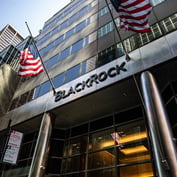The Consumer Price Index inflation rate has lagged the Producer Price Index inflation rate for the better part of two years. While this may seem to be a matter of interest only to economists, it should cause investors to stand up and take notice.
Consider that at the most basic level, corporations pay for products at wholesale prices, which are measured by the PPI, and sell them at retail rates, which are tracked by the CPI. Consequently, the difference between these two inflation measures should serve as a rough proxy for corporate profit growth and provide some insight into the path of equity market performance.
Does this theory hold up in practice? Stock market performance has tended to diminish over time whenever the rise in the CPI has fallen short of that in the PPI. Since 1948, whenever the year-over-year change in the PPI outpaced the yearly advance in the CPI, the S&P 500 averaged an annualized increase of 13.0% over the following three months. In the six months after these shortfalls, however, the S&P averaged an annualized gain of 8.2%. Not surprisingly, after one year, the average increase equaled just 5%. Further, in both the 18 and 24 months after these occurrences, the index averaged meager annualized increases of 4.2%. These numbers suggest that market performance does tend to suffer with a lag in response to an unfavorable inflation spread.
This relationship between equity prices and the CPI/PPI spread has been remarkably steady over time. While it is true that stock market performance was stronger in the face of negative inflation spreads in the 1990s than in prior decades, annualized gains still deteriorated then after the spread between retail and wholesale inflation turned negative. In addition, the episodes in which the inflation spread went negative in the 1990s were relatively short-lived.

There has also been a negative relationship between the performance of the S&P 500 in a given decade and the number of times that the CPI inflation rate trailed the PPI inflation rate. In every decade since the 1960s, in fact, average yearly gains in the stock market have been inversely related to the amount of time that the yearly change in the CPI has fallen short of the yearly change in the PPI. Specifically, there has been a -65% correlation over the last five decades between the average yearly change in the S&P 500 and the number of months that the PPI has outpaced the CPI.








 March 01, 2005 at 02:00 AM
March 01, 2005 at 02:00 AM










